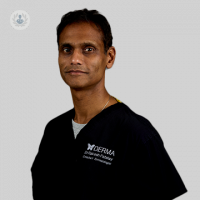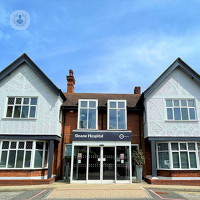Mohs surgery
Dr Kapil Bhargava - Dermatology
Created on: 11-05-2015
Updated on: 11-10-2023
Edited by: Conor Lynch
What is Mohs surgery?
Mohs surgery is an innovative surgical technique used to treat skin cancers. Thin layers of skin that contain cancer are removed and examined until cancer-free tissue remains. This is done without damaging the healthy tissue. The procedure is named after American surgeon Dr Frederich Mohs who pioneered the technique.

Why is Mohs surgery performed?
Mohs surgery is used to treat the most common skin cancers, basal cell carcinoma and squamous cell carcinoma, and some other types of melanoma. It is performed because:
- The minimum possible tissue is to be removed
- The tumour is to be removed completely before sewing
- There is a scar or there has been previous radiation treatment
- The cancer was already treated and not fully removed and/or has returned
- The cancer is in an area where as many healthy tissues as possible are to be preserved – around the eyes, ears, nose, mouth, hands, feet and genitals
- Borders are hard to define
- The patient's immune system does not respond well to cancer treatments or medications that they are already undergoing
What happens during Mohs surgery?
Before a tumour is removed, all of the affected tissue is analysed, which includes the bordering areas. Performed under local anaesthetic, the surgeon uses a scalpel to remove any visible cancer and a thin layer of skin surrounding the tumour.
The tissue that has been removed is processed in a laboratory, which can take up to one hour, as the patient stays in a waiting room. If the doctor finds cancer cells another layer of skin will be taken off. This process continues until all of the roots of the cancer are removed.
The precise removal of cancer through Mohs surgery means that as much healthy tissue as possible is saved and it minimises the aesthetic reconstruction required after surgery. Mohs surgery can be a long process since each stage must be carefully examined. Once the surgeon is happy that all of the cancerous cells have been removed they will discuss how to reconstruct the wound.
How to prepare for Mohs surgery
The measures taken before Mohs surgery are:
- Do not take certain types of medications - such as anticoagulants
- No smoking
- Bring a companion – the patient will need someone to drive them home
What is postoperative care like after Mohs surgery?
Mohs surgery is done as a day case, which means that the patient can go home following the procedure. If the area that was treated was only small then it would have been covered with a dressing. This needs to be left in place to protect the wound and to stop any bleeding. In bigger areas, there may be:
- Stitches
- Skin grafts (covering the wound with skin from another part of the body)
- Skin flaps (the wound is covered with the surrounding skin)
Once the local anaesthetic has worn off, it may be painful. It is recommended to take over the counter pain relief medication (Paracetamol). There may be bruising or swelling around the area, which will ease in a few days. If there are any stitches then the patient will need to return to the hospital or see their GP to have them removed.














